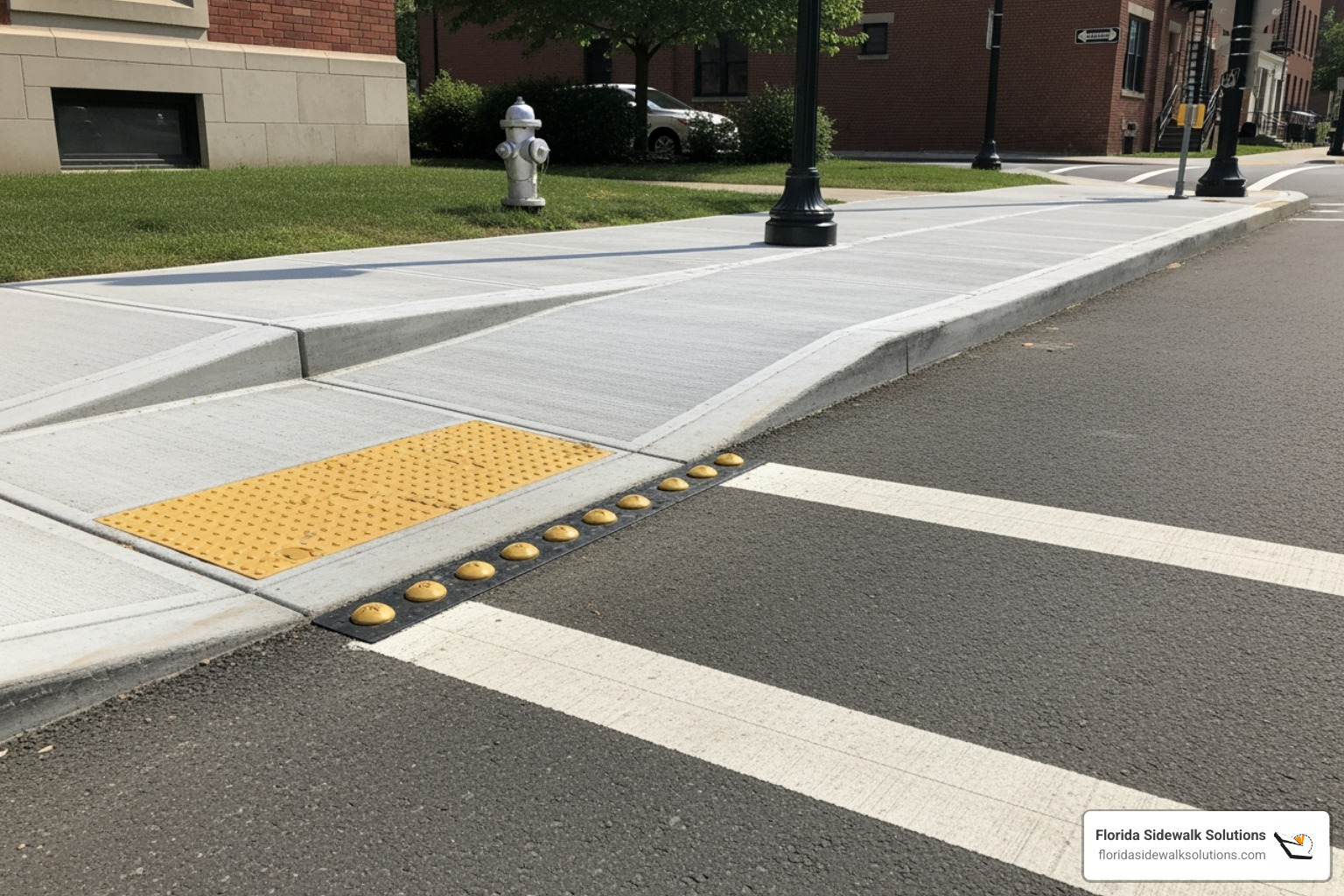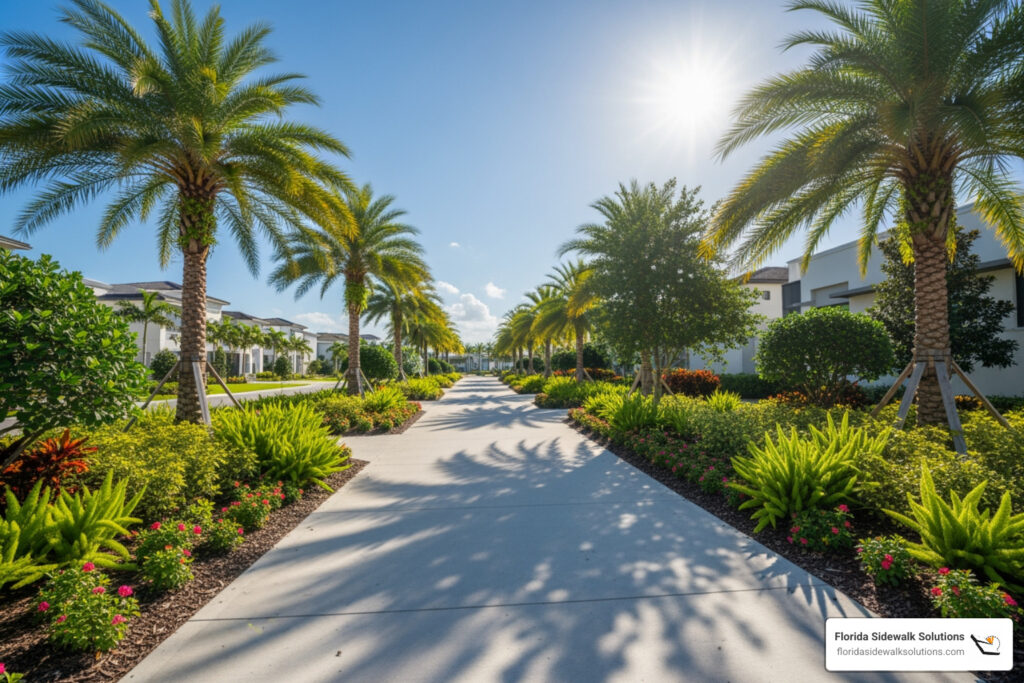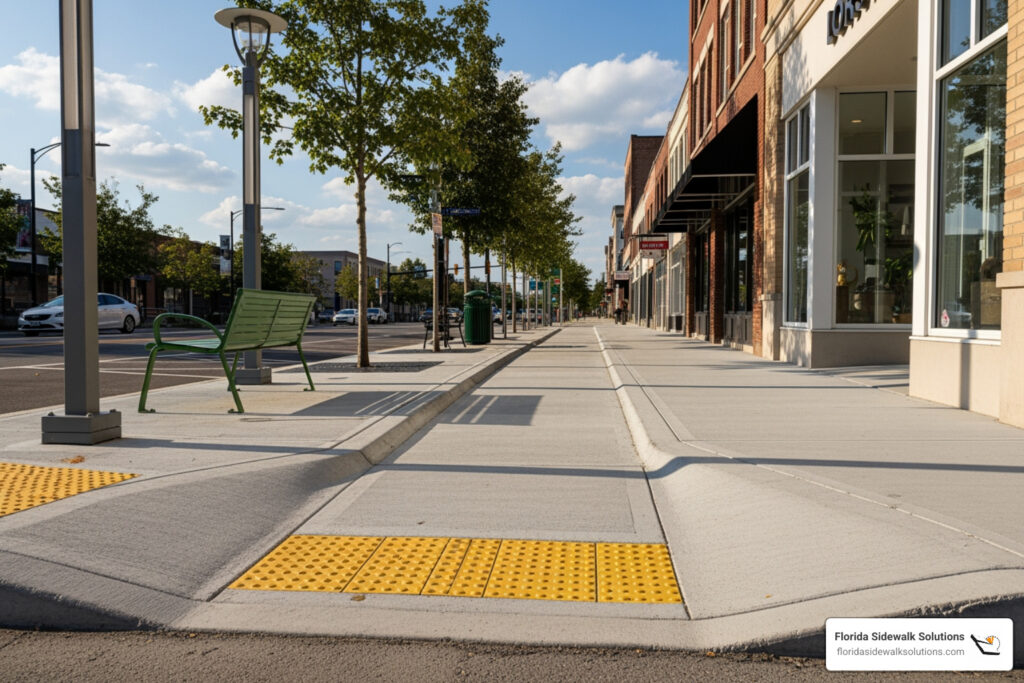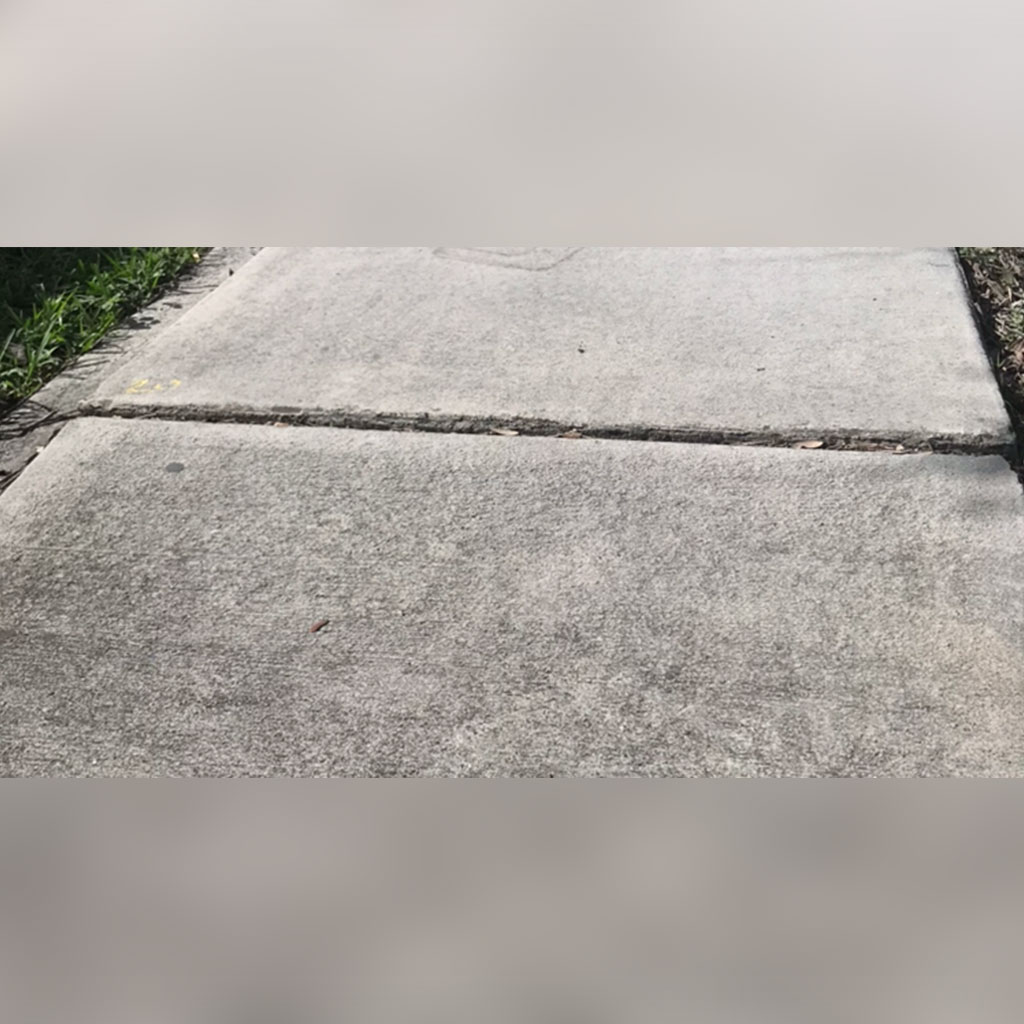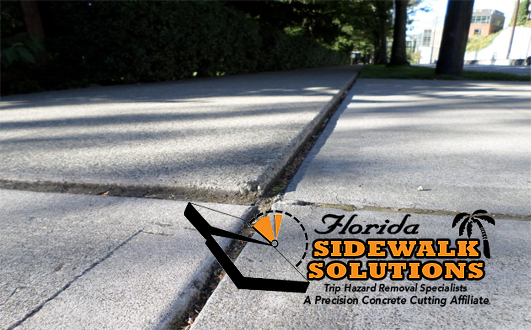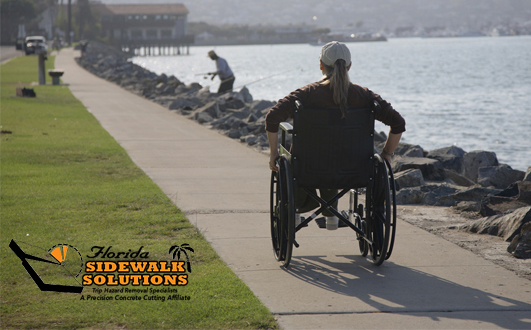Understanding ADA Curb Ramp Requirements for Municipal Compliance
A curb ramp is a sloped transition connecting sidewalks to streets, providing accessible routes for people with disabilities and other pedestrians. These ramps must meet specific ADA standards to ensure safety and legal compliance.
Key ADA Requirements for Curb Ramps:
- Maximum slope: 8.33% (1:12 ratio) for running slope
- Cross slope: Cannot exceed 2% (1:48 ratio)
- Minimum width: 36 inches (48 inches recommended)
- Top landing: At least 36 inches deep
- Side flares: Maximum 10% slope when pedestrians cross them
- Detectable warnings: Required tactile surfaces at street transitions
- Flush transitions: No abrupt level changes at gutter connections
As a municipal maintenance manager, bringing existing infrastructure into ADA compliance on a tight budget is a major challenge. According to the U.S. Access Board, curb ramps are federally mandated at all intersections with pedestrian crossings, and non-compliance can lead to costly legal issues.
Common compliance problems include improper slopes, missing landings, and trip hazards from settling or root intrusion. Traditional repairs like concrete grinding or full replacement are expensive and disruptive. However, specialized concrete cutting techniques can address these issues more efficiently, costing significantly less while minimizing disruption to pedestrian traffic.
Trip hazards are particularly problematic at curb ramps because they create the exact barriers these ramps are designed to eliminate. Even small lips or uneven transitions can make ramps unusable for wheelchair users and dangerous for all pedestrians.

Quick curb ramp terms:
- ada compliant ramp specifications
- ada ramp slope
- american with disabilities act accessibility guidelines sidewalks
What is a Curb Ramp and Why is it Essential?
A curb ramp is a sloped surface creating a smooth bridge between sidewalks and streets, eliminating vertical barriers that pose challenges for many people. These ramps are a cornerstone of universal design, making public spaces easier to steer for everyone.
While originally conceived for people with disabilities, curb ramps have become essential for all. They benefit anyone rolling a suitcase, pushing a stroller, or simply avoiding an awkward step. The Americans with Disabilities Act (ADA) made curb ramps law, recognizing that true accessibility requires freedom of movement in public spaces. According to the U.S. Access Board’s guidelines on ramps and curb ramps, these installations are mandatory at intersections with pedestrian crossings. Cities like Miami and Jacksonville continue to retrofit older intersections to meet these standards.
Who Benefits from a Properly Installed Curb Ramp
Properly installed curb ramps benefit the entire community. People with disabilities, including wheelchair users and those with walkers, rely on them for basic independence. However, the beneficiaries extend much further:
- Parents with strollers steer curbs safely and easily.
- Senior citizens avoid jarring steps that can be hard on knees and hips.
- Delivery personnel with hand trucks and cyclists moving between lanes and crosswalks appreciate the smooth transitions.
When a community is easier to steer, local businesses can thrive, neighborhoods become more connected, and a sense of inclusive mobility is strengthened.
Common Locations and Applications

Curb ramps are found wherever pedestrian and vehicle areas meet. Key locations include:
- Sidewalks and intersections: Every street corner with a crosswalk requires them.
- Public buildings: Libraries, courthouses, and community centers use them to ensure access to services.
- Parks and recreational areas: They welcome families and individuals with mobility devices.
- Transit stops: Ramps are essential for safe and accessible boarding.
- Loading docks and driveways: They facilitate cargo movement and protect low-clearance vehicles.
The challenge arises when these access points develop trip hazards from settling, root intrusion, or wear. Even a small lip can render a curb ramp unusable, making specialized sidewalk leveling crucial for maintaining safety and ADA compliance.
Understanding ADA Technical Requirements for Your Curb Ramp
Designing an ADA-compliant curb ramp requires adherence to precise technical specifications. These standards ensure every ramp is safe, usable, and accessible. Understanding these details is paramount for municipal managers to ensure compliance and avoid legal issues.

The ADA Standards for Accessible Design provide a comprehensive guide, ensuring a curb ramp in Fort Lauderdale is as accessible as one in Fort Myers. Here are the key technical aspects.
Slope and Rise: The Critical Measurements
The slope is a ramp’s most critical feature, dictating ease of use and safety.
- Running Slope: The maximum running slope is 1:12 (8.33%). The ADA encourages the gentlest slope possible. While this is strict for new construction, alterations to pre-1992 ramps may allow for slightly steeper slopes in rare cases with documented space limitations.
- Cross Slope: The slope perpendicular to the direction of travel cannot exceed 1:48 (2%). This is essential for stability and control, preventing wheelchairs from drifting sideways.
- Maximum Rise: For a general ramp run, the maximum rise between landings is 30 inches, preventing excessively long or steep sections without a rest area.
- Counter Slope and Gutter Transition: The adjoining gutter or street surface where it meets the ramp cannot have a slope steeper than 1:20 (5%). This prevents abrupt level changes that can stop a wheelchair or create a trip hazard.
Landings, Flares, and Clear Space
The areas around a curb ramp are crucial for safety and usability.
- Top Landings: A level landing is required at the top of every curb ramp. It must be at least 36 inches deep and as wide as the ramp itself, providing essential maneuvering space.
- Side Flares: These sloped sides prevent tripping where pedestrians might cross the ramp’s edge. Their slope cannot be steeper than 1:10 (10%). If the adjacent sidewalk is less than 48 inches wide, a gentler slope may be required.
- Clear Space: Curb ramps must not project into traffic lanes or parking spaces. Diagonal ramps at marked crossings need a 48-inch clear space at the bottom, within the markings, to provide a safe waiting area before entering the street.
For more detailed guidance, the FHWA’s guide, Designing Sidewalks and Trails for Access, is an excellent resource.
Detectable Warnings and Surface Requirements
Special features are required to ensure safety for individuals with visual impairments.

- Detectable Warnings: These tactile surfaces of small domes alert visually impaired pedestrians that they are transitioning to a vehicular area. They must contrast visually with the surrounding surface. The DOT allows an alternative design for public streets where they cover the two feet of the ramp closest to the street.
- Non-Slip Surfaces: All curb ramp surfaces must be stable, firm, and slip-resistant, especially in wet conditions, to prevent falls.
- Wet Conditions: Ramps and gutters must be designed to prevent water and debris accumulation. Drainage inlets should be located uphill from the curb ramp to divert water away.
Addressing Trip Hazards and ADA Compliance
Even a well-designed curb ramp can develop problems over time. Weather, traffic, and natural causes can turn a compliant ramp into a liability.
Trip hazards are uneven surfaces that appear at curb ramps, where smooth transitions are expected. Common causes include heaving from tree roots, settling from ground compaction, and general wear and tear. These are not minor annoyances; they are serious ADA compliance risks. The ADA requires accessible routes to be free of vertical changes greater than 1/4 inch (or 1/2 inch if beveled). Anything more is a violation.
The consequences are severe: increased injury risk, legal and financial liabilities from lawsuits and fines, and, most importantly, the failure to provide accessibility. A trip hazard makes a curb ramp unusable for those it is meant to help.

Perfectly smooth, level transitions are essential for safety and compliance. At Florida Sidewalk Solutions, our precision concrete cutting method addresses trip hazards at their source without the disruption and expense of traditional repairs. We make precise cuts to create perfectly level, ADA-compliant transitions instead of tearing out entire sections. This approach is cost-effective, minimally disruptive, and delivers fast, lasting results.
The Florida Sidewalk Solutions Approach
Our patented technology revolutionizes how trip hazards are addressed.
- Precision concrete cutting: Unlike rough grinders, our specialized equipment makes clean, accurate cuts to level uneven concrete to exact ADA specifications.
- No removal or replacement: We avoid the messy, time-consuming, and expensive process of demolition and repouring by adjusting the existing concrete.
- Minimally disruptive: Our process doesn’t shut down pedestrian access for days. Repairs are completed with minimal interruption.
- Fast turnaround: Without concrete curing times, we can complete repairs in hours, not weeks. Your curb ramps are back in safe operation almost immediately.
- Long-term results: Our precision cutting creates stable solutions that stay level for years.
- ADA compliance focus: Every cut and finished surface meets or exceeds accessibility guidelines, ensuring your curb ramps are truly compliant.
Designs for Different Scenarios: A Quick Guide
Different curb ramp designs face unique trip hazard challenges.
- Perpendicular ramps run straight to the street. Hazards often develop at the connection points with the sidewalk or street. Our cutting restores smooth transitions.
- Parallel ramps run alongside the curb. They can develop unevenness along their length, and landings can pond water. We re-level the surface and ensure proper drainage.
- Blended transition ramps lower an entire corner. These large, sloped areas can develop widespread unevenness. Our method restores consistent, safe grades.
- Diagonal ramps at corners can have landings that settle. Our cuts restore the required 48-inch clear space at the bottom and correct unevenness.
In every scenario, our approach provides a targeted, efficient solution to restore surface integrity and meet ADA standards affordably.
Frequently Asked Questions about Curb Ramps
Here are answers to common questions from property managers and city officials about curb ramps and ADA compliance.
Are curb ramps required on private property driveways?
For private residential driveways, federal ADA regulations typically do not require a curb ramp. However, commercial properties that serve the public, such as shopping centers or businesses, are a different story. If a driveway is part of an accessible route to an entrance, ADA requirements likely apply.
Additionally, many Florida cities and counties have local building codes that may mandate ramps where federal law does not. It is always best to check local ordinances. For homeowners, even if not required, a curb ramp can provide vehicle protection for low-clearance cars, preventing costly undercarriage damage.
What is the difference between a ramp and a curb ramp?
While the terms are often used interchangeably, they have different meanings under the ADA.
- A general ramp can be anywhere, such as leading to a building entrance or connecting floor levels. These often require handrails and have different design rules.
- A curb ramp has the specific job of connecting a sidewalk to a street. They rarely need handrails but require features like side flares and detectable warnings.
These ADA definitions and location differences are important because the compliance requirements vary. Curb ramps are in the public right-of-way and exposed to elements, making them more prone to trip hazards that our specialized cutting method can efficiently repair.
How much does it cost to make a curb ramp ADA-compliant?
The cost depends on the method and the severity of non-compliance.
- Traditional methods are expensive. A new construction curb ramp can cost $800 to $1,500, while retrofitting an existing one can cost even more due to demolition, re-grading, and permit fees.
- Florida Sidewalk Solutions’ method is a game-changer for trip hazard-related compliance issues. Instead of costly replacement, we precisely level the existing concrete.
For trip hazards caused by heaving or settling, our specialized cutting technique can remove the barrier for as little as 1/10 the cost of conventional repair. Where a traditional fix might cost $1,000, our method could solve the problem for around $100. This makes ADA compliance affordable, with a fast turnaround and minimal disruption.
Ensuring Long-Term Safety and Compliance
Installing an ADA-compliant curb ramp is the first step; maintaining it is crucial for long-term safety. Over time, weather, traffic, and tree roots can shift concrete, creating cracks and uneven surfaces. A small bump can quickly become a dangerous trip hazard and an ADA violation.
Regular inspection is the best defense. Routinely surveying your curb ramps and walkways helps you spot issues like settling or cracks before they become major problems, saving on future repair costs. Key maintenance needs include:
- Trip hazard removal: This is critical. Any vertical lip over 1/4 inch compromises accessibility and creates a legal risk.
- Crack repair: Addressing small cracks prevents them from expanding.
- Surface integrity: Keeping the ramp surface smooth and maintaining detectable warning strips ensures continued safety.
Florida Sidewalk Solutions is your partner in maintaining long-term compliance. Our specialized concrete cutting method is designed for proactive maintenance. Instead of waiting for problems to require expensive replacement, we can address trip hazards while they are still manageable. Our approach delivers long-term results by providing a permanent fix, not a temporary patch.
By partnering with us, you choose an effective, economical, and minimally disruptive method to maintain accessible environments for everyone. Your investment in curb ramps will continue to pay dividends in safety and inclusivity. Our precision technology creates smooth, ADA-compliant transitions without the mess and expense of traditional repairs.
To learn more about how we can help you maintain ADA-compliant walkways and effectively remove trip hazards, explore our comprehensive solutions: Learn about ADA-compliant walkway solutions.

